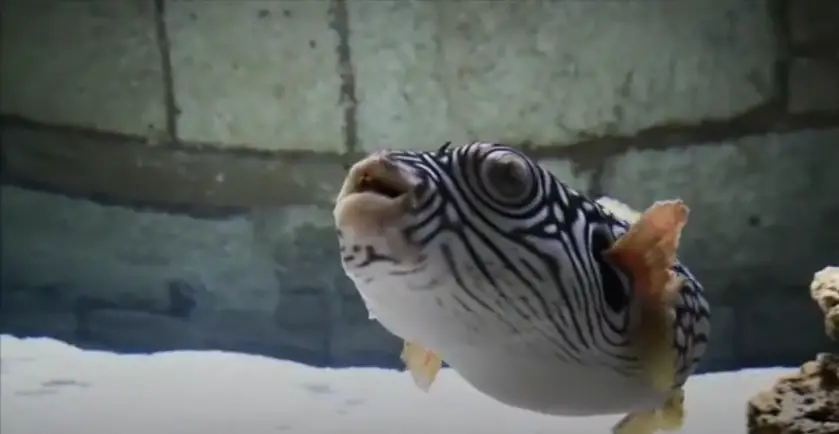
As Morski/Zana Moslavac writes on the 26th of August, 2020, the new tropical sea exhibition at the Pula Aquarium in Istria, which opened after several months of preparation, is inhabited by an interesting and well-known animal: the white-spotted puffer (Arothron hispidus). It is interesting that it belongs to the family of tetraodontidae, and all members of this group have one common characteristic: they all have four ”plates” in the mouth that they use as teeth.
This species naturally inhabits areas of the Indian and Pacific oceans where its sharp flat teeth are used to crush prey with a solid exoskeleton. It is known for its ability to inflate its body, which it achieves by ingesting water or air through the mouth into a small chamber near the stomach. This ability is used when it is endangered, making it difficult for a predator to swallow it.
In addition, members of this family are considered more poisonous, that is, they are among the second most poisonous vertebrates in the world. The poison tetrodotoxin, which is much more dangerous than cyanide itself, is not found in certain organs of these animals. An antidote doesn’t currently exist, but not even that fact stopped humans from eating these fish. Japan and Korea traditionally prepare delicacies from “fugu” puffers, provided that the fish is prepared exclusively by specially trained chefs who know how to properly separate the meat from the organs which may contain the potent substance. Unfortunately, poorly prepared meat fish of this kind results in several deaths per year. For that reason, the Japanese emperor was forbidden from consuming this unusual and potentially dangerous delicacy.
”Arothron hispidus arrived at the Pula Aquarium two years ago, when we bought one from the “Globo Divulgazione Scientifica” science association from Trieste, Italy, where it was part of an exhibition of dangerous marine animals. We placed it in our tropical marine setting, but as that aquarium room was intended for a complete reconstruction, the fish spent the last few months in aquarium quarantine. Obsolete steel pools have been replaced by modern, acrylic pools, which have arrived completely finished. They are monoblock pools in which tropical sea fish have been placed which cannot share space with other smaller tropical fish,” said Zarko Jakovic.
Apart from the tropics, one type of puffer fish can be seen in the Mediterranean today. Namely, what is commonly known as the silver-cheeked toadfish (Lagocephalus sceleratus), a newcomer from the Red sea, was subsequently granted the status of an invasive species due to its extremely high reproductive rate and non-selectivity in feeding. It also causes significant negative consequences for fishing, such as tearing nets.
Watch the video of Istria’s potent resident below:
For more, follow our lifestyle section.
For the latest travel info, bookmark our main travel info article, which is updated daily.
Read the Croatian Travel Update in your language – now available in 24 languages
Join the Total Croatia Travel INFO Viber community.








